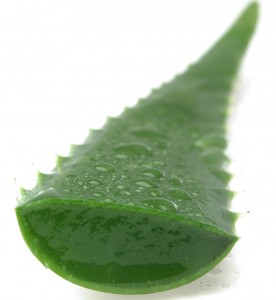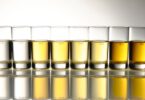By Kim Erickson
Blisters
While it’s tempting, never pop a blister. Doing so just invites infection. If a blister breaks on its own, wash the area with soap and water, then dab the blister with tea tree (Melaleuca alternifolia) essential oil. Dubbed a “first-aid kit in a bottle,” tea tree oil is a strong antimicrobial with antiseptic properties. Cover with a gauze bandage and change the dressing daily.
Bug Bites
If you live in a humid climate, you’re all too familiar with the drone of mosquitoes and other flying insects. The best way to deal with these hungry critters is to thwart their attack with an herbal repellent. But forego commercial brands formulated with deet (N,N-diethyl-m-toluamide), a pesticide that studies show can be neurotoxic to children. Instead, look for a natural herb-based insect repellent or make your own by combining 2 ounces of a carrier oil (like almond or grapeseed oil) with 1/2 teaspoon of lemongrass (Cymbopogon spp.) or citronella (Cymbopogon nardus) essential oil. Or try fennel (Foeniculum vulgare), which Korean researchers have found offers up to 84 percent protection for 90 minutes.
[pro_ad_display_adzone id=”110028″]
If your child suffers a minor bite or sting, use a poultice made from equal parts echinacea (Echinacea spp.) tincture, water and bentonite clay to draw out the poison. You also can add a few drops of lavender (Lavandula angustifolia) essential oil to boost its antiseptic and antibacterial properties. While most bites are just a temporary nuisance, take your child to the doctor if she suffers from a headache, fatigue and body aches, swollen lymph glands or a skin rash, since these can be symptoms of West Nile virus.
Bumps and Bruises
The best herbs for treating bruises are those that discourage swelling. Topping the list is St. John’s wort (Hypericum perforatum), an effective anti-inflammatory herb that also helps reduce pain. Herbalists also turn to arnica (Arnica montana) to ease swelling and thwart bruising. Both herbal tinctures can be mixed with water and used as a compress on the affected area. Just be aware that arnica must be diluted 4:1 to prevent irritating the skin.
Burns
Whether it’s a kitchen mishap or too much time in the sun, nothing is more painful than a burn. For any type of burn, it’s important to take immediate action. First, cool the burned area by immersing it in cold water—the cold numbs the pain and prevents further injury. Then reach for the herbs.
Aloe (Aloe vera) is a well-known remedy for soothing minor burns. However, numerous studies show that this succulent herb also speeds healing. In one study review, researchers noted that the healing time for subjects using aloe vera was nearly nine days shorter than those in the control group.
While you can purchase a prepared aloe vera gel, if you’re lucky enough to have your own aloe plant, remove an outer leaf and peel off the thin, green skin from a small section of the leaf. Rub the gel-like substance from the inside directly onto the burn. Store the remaining unpeeled leaf in the refrigerator and use as often as necessary to ease the pain.
Whether you treat your burns with an herbal remedy of your own making or with a commercial treatment, you should avoid using oil-based salves. Oil retains heat and inhibits air circulation and drainage, all of which combine to slow healing.
Car Sickness
Nothing spoils a trip faster than a bout with motion sickness. If nausea strikes your child, try ginger (Zingiber officinale). Ginger not only relieves nausea, it also might be able to prevent motion sickness when taken prior to traveling.
For those old enough to swallow pills, keep a supply of ginger capsules in your purse or glove box to quell a queasy tummy. Younger children can benefit from ginger cookies or a ginger lollipop (often marketed for morning sickness).
Cuts and Scrapes
Most cuts and abrasions heal on their own. But, because an infection can occur any time the skin is broken, it’s better to be safe than sorry.
Powdered goldenseal (Hydrastis canadensis) is a powerful antimicrobial and antiseptic that can be sprinkled directly onto cuts or wounds to stop bleeding. Bleeding from a cut usually stops by itself or after the application of goldenseal. If it doesn’t, cover the wound with a clean cloth and apply pressure.
Once the bleeding has stopped, gently wash the wound with soap and water. Pat dry and apply an extract of gotu kola (Centella asiatica). According to a recent study at Melaka Manipal Medical College in India, gotu kola speeds healing by increasing collagen production within the skin.
Honey is another natural antibacterial treatment for minor cuts and scrapes. Clinical trials show that this sweet remedy significantly reduces bacterial contamination in wounds and helps them heal faster. In fact, it’s just as effective as an over-the-counter antimicrobial barrier dressing.
Splinters
Slivers of wood, metal or glass that become embedded in the skin need to be removed to avoid infection. Use sterilized tweezers or a sewing needle to ease the splinter out, then wash the wound with an herbal infusion to disinfect.
Herbs with both antiseptic and anti-inflammatory properties include St. John’s wort, chamomile (Matricaria recutita), goldenseal, Oregon grape (Mahonia aquifolium) or yarrow (Achillea millefolium). A strong infusion of one or more of these herbs can be used to wash the area where a splinter has poked through the skin.
Sprains and Strains
From T-ball to Saturday soccer games, childhood sports are the cause of countless muscle strains or sprained ankles. The first task is to immediately discourage swelling, pain and muscle spasms by applying an ice pack and elevating the affected area.
Herbalists often turn to arnica to treat the bruising that comes with minor sprains and strains. To ease both swelling and bruising, alternate an arnica compress with a clay pack made from equal parts of bentonite clay and either water or apple cider vinegar. Apply a thick layer of the wet clay to the affected area and cover with a towel for 15 to 20 minutes. Rinse well and follow up with an arnica compress.
European investigators also have discovered that using a comfrey root (Symphytum officinale) ointment on a sprained ankle is just as effective as a gel containing diclofenac, a prescription anti-inflammatory and analgesic drug.
Play It Safe
While most minor maladies can safely be treated at home, there are times when a trip to the doctor or emergency room is called for. Seek immediate medical attention if your child has a wound that won’t stop bleeding, large or jagged wounds that might require stitches, burns that produce large or extensive blisters, or any type of human or animal bite.
Article Source
About the Author
Kim Erickson is a frequent contributor to Herbs for Health and is the founder of Kim Erickson’s Everyday Organics.
[pro_ad_display_adzone id=”110027″]
Disclaimer: This article is not intended to provide medical advice, diagnosis or treatment. Views expressed here do not necessarily reflect those of Wake Up World or its staff.







